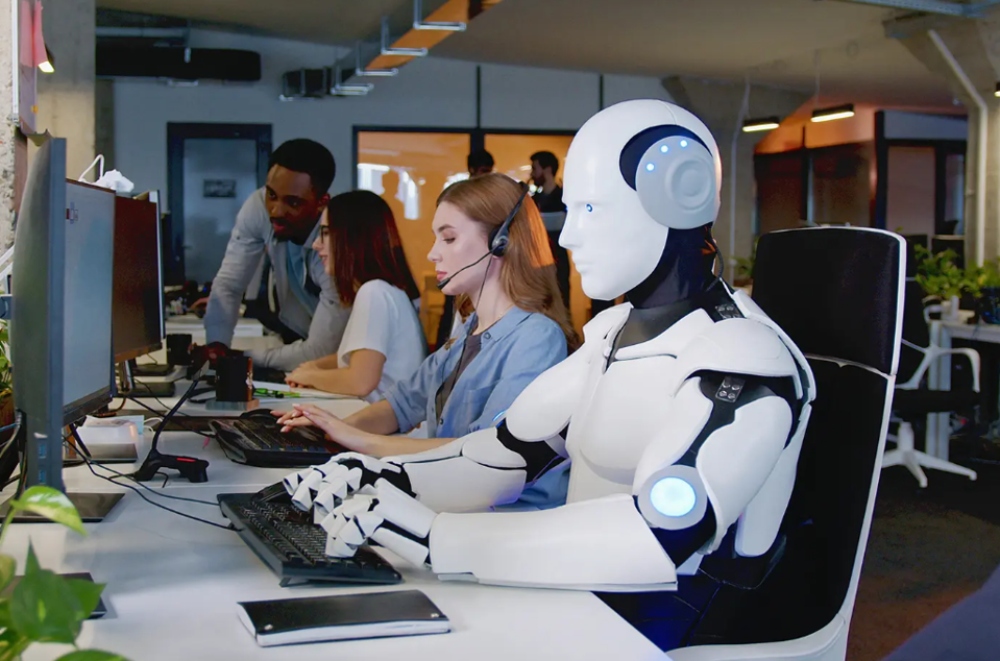
Capitalism and Technology: Between Dangerous Links
The digital innovations inspired by the life of Ada Lovelace (Countess of Lovelace, 1815 - 1852 daughter of Lord Byron, pioneer of computer science) will come from people able to associate beauty with engineering, humanism with technology and poetry with processors.
It will come from creators able to flourish where arts and letters meet science, and endowed with a sense of rebellious wonder .
Walter Isaacson
It is now worth taking a closer look at the debate over the past year on the question of the impact of artificial intelligence and robots on employment. The history of computer science really starts with Douglas Engelbart. In the 1960s, he was the inventor and pioneer of computer science, and famous for having invented the computer mouse, a symbol of the fusion of man and machine.
Since the famous story of the "Luddites", technology has raised two recurring questions :
*Firstly, that of the eternal replacement of men by machines versus the thesis of the increase of shareable wealth through machines.
*Secondly, the question of whether computer science would benefit most people through the diffusion of knowledge or whether on the contrary, technology would limit the access to knowledge, as some academic communities in San Francisco paradoxically seemed to expect in the 1960s.
In fact, in the Bay of San Francisco, hippie communities formed to defend the contentious idea that technology must allow more freedom rather than enhance the establishment and bureaucracy. Humans had to be at the heart of economic development.
Today, we face the same question with robots and artificial intelligence. We wonder whether these technologies will allow for greater social justice by improving access to employment, or whether, they will in fact contribute to a higher concentration of wealth and with that, to the emergence of a society shaped on the basis of its capacity to adapt.

Computer science has considerably grown since Grosch's Law (1960). A computer engineer and American astronomer demonstrated that the cost of a computer system increases proportionally to the square root of its power. Later, Moore's law became famous by showing that the cost of electronic components halves every 18 months. Computer science, it can be said, has spent its history looking for increasing returns, and that was not always easy, as heavy bureaucracies resisted any change.
The arrival and diffusion of the microprocessor has democratised the use of personal computers and their use in business. Gradually, software, followed by statistics, imposed their power. Today, robots and artificial intelligence are becoming more and more popular and represent a profound change in history. This is not least because artificial intelligence, which many wrongly refer to as the '4th sector', in fact affects all industries. Most sectors are concerned with the automation of production processes and robots. Slowly but surely, artificial intelligence and robots are entering many disparate organisations.
As Joseph Schumpeter has demonstrated, every economic phenomenon has a cycle that can be divided into two stages: 'the past' (1980-2015) and 'the future' (2015-2040). At Schumpeter's time, for example, the Kondratiev cycle in the 1920s lasted between 40 and 60 years.
Today, when we read economic news, we are immediately absorbed by their linear reasoning, and their conclusions on the impact of technology on employment is no exception. The explained effect is either positive or negative; explanations where the effect is negative in one period but becomes positive in the second are rare. Such results are of course familiar to economic researchers or professionals, but the economic news does not take them into account. As a result, opinions remain quite dogmatic, you are either 'in favour' or 'against', a technophile or a technophobe. The truth is that neither of the two are right, nor does it lay somewhere between the two. The truth is simply that the technologies and their impact on employment, just as any other human phenomenon, follow a cycle. The latter begins with a rather unfavourable period for employment (around 1980-2015), 'the past', that is followed by a period favourable to employment (2015-2040), 'the future'. Thus, technophobes are right in the past, but technophiles are right in the future.

During these two periods, the economy of supply, as well as the concentration of wealth are intensified. This increases the need to adapt individually, and to adapt economic policy in order to make the Digital Revolution a means to increase wealth equitably. It is crucial to distinguish between three things: the jobs that will disappear, those that will flourish and those that will be created. Whether they are manual or cognitive, the more tasks are a matter of routine, the more they can be automated and carried out by machines. But not everyone will be able to be a Big Data manager. It will therefore be necessary to adapt, as much at the individual level as in terms of economic policy. And at the individual level, there are many ways to adapt!
In 2016, Davenport and Kirby developed the theory of 'the increase'. The idea is that of synergies between people and machines. To adapt to the development of technology, it will be necessary to add value by the use of data, to be creative and intuitive, to manipulate concepts that will find an echo with high-end customers, to develop multiple types of intelligence, to master software and their automatic decision, to supervise teams.
Finally, the fine knowledge of a network in a context of high capacity in order to anticipate future technologies form a whole set of assets that will protect employees from technological unemployment or the decline in their productivity (since it is the productivity of technological capital that will increase).
Everyone must choose their own relationship to the market. The good news is that a lot of brain work cannot be codified.
The development of technology is also an opportunity to completely reshape economic policy. Of course, universal income, or financing by 'helicopter money', that is to say directly to the consumer, is designed more at the European than at the national level through the consolidation of social minima, is a solution just like the tax on robots. The generalisation of this measure seems to be essential for EU countries. Then the digital transformation will ensure equal opportunities without falling into technological totalitarianism.
Trending
-
1 UK Tech Sector Secures a Third of European VC Funding in 2024
Azamat Abdoullaev -
2 France’s Main Problem is Socialism, Not Elections
Daniel Lacalle -
3 Fed Chair Jerome Powell Reports 'Modest' Progress in Inflation Fight
Daniel Lacalle -
4 AI Investments Drive 47% Increase in US Venture Capital Funding
Felix Yim -
5 The Future of Work: How Significance Drives Employee Engagement
Daniel Burrus





Comments